There is nothing quite like the taste of homemade strawberry jam. The sweet, succulent flavour of fresh strawberries is something that can be enjoyed all year round. It is such a pleasure to make your own strawberry jam. This is a great way to extend the benefits of fresh fruit.
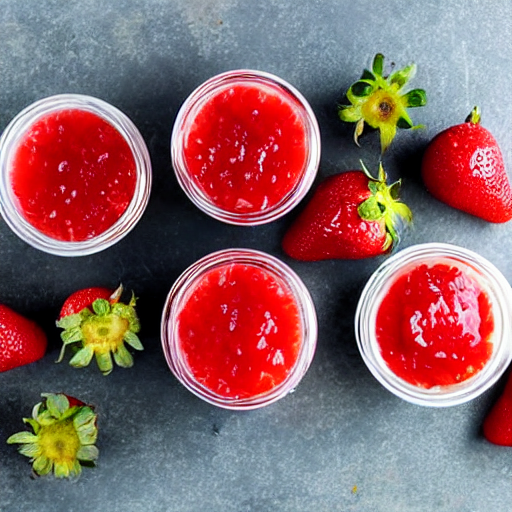
One of the best things about homemade strawberry jam is that it is easy to make. A few simple ingredients plus a little bit of time, and you have a delicious strawberry jam. It is easy to make, and a great way to get the most out of your fresh strawberries.
You may grow your own strawberries, pick your own at a nearby farm, get some at a farmers market or buy it at the supermarket. Wherever its from, you can make homemade strawberry jam. It will taste so much better than that which you can buy ready-made. By making it yourself you are in control of the range and quality of the ingredients. So just follow a few simple steps to make the best strawberry jam. It that will prove irresistible to you and your family and friends.
TIPS to make the perfect strawberry jam:
The strawberries
- If you can, try to get the best quality strawberries that you can. You don’t need a bucket full!
- Try really hard to resist the temptation to make your strawberry jam with over-ripened fruit – slightly under ripe strawberries contain higher amounts of pectin which will aid the setting process, and too-ripe fruits can make the mixture mushy and risk quicker spoiling of the jam. If you do want to make some jam with any over-ripe strawberries click here for a different recipe that can accommodate this situation.

- You can use frozen strawberries instead of fresh ones. As the frozen fruits will have more water, this will extend the cooking time of the jam. Sometimes frozen strawberries can also be less sweet than fresh, and so a bit more sugar could be needed to achieve the same luscious outcome.
The sugar
- This recipe includes a large amount of white sugar – keep to the full recipe for your first try, knowing you can experiment with the amount and type of sweeteners to find the perfect and safe balance. The sugar in this recipe is not only for taste, it is also the main natural preservative stopping the jam from spoiling prematurely. This can enable you to store this jam for up to a year. With less sugar, you may need to add pectin.
The preparation
- Even if your strawberries come ‘pre-washed’, make sure that you wash them. Always wash the fruits ahead of cooking. Add a pinch of bicarbonate of soda, and a splash of vinegar to the washing water to rinse off pesticides and any insect hitchhikers. Then rinse with clean water, and allow to drain.
- Do not worry if a ‘scum’ starts to form on the surface of the jam while cooking – while you can skim it off the surface into a bowl, or just stir and allow it to disappear as the jam cooks.
- Because different varieties of strawberries and their level of ripeness can differ in their water content, together with possible variations in the amount of natural pectin in different lemons, this can affect the cooking time to reach the ‘set-point’ of the jam. In addition to having some flexibility with the time, you also need to be flexible with the amount of lemon juice that may be needed to realise a good outcome.
- This strawberry jam recipe does not use pectin (one less ingredient to find!)to accelerate the thickening and setting of the jam. You just need a bit longer cooking time to draw out the natural pectins in the strawberries and lemon juice combination to thicken this jam.
The cooking
- Depending on what you prefer, you can make this jam as smooth or as textured as you like. For a chunkier jam chop the strawberries roughly; and for a smooth jam, you can blend the fruits first or use a food processor.
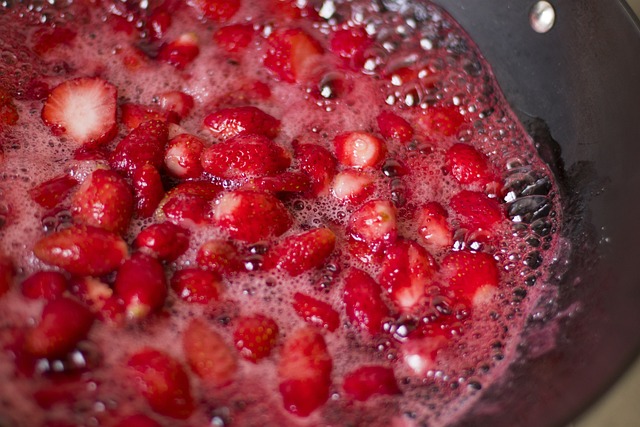
- If the jam has not set after testing, continue to boil for a few more minutes and then test again.
- If the jam remains very runny you may also consider adding a bit more lemon juice – go slowly – add 2 tablespoons boil and retest, before considering a further 1-2 tablespoons if needed. It is important to let this cook through and then retest for set-point before adding too much lemon juice.
- If a jar lid has not dipped in the centre after cooling the sealed jam jar, it might still be fine to keep; but if in any doubt, put this jar in the fridge for use over the coming 2 weeks.
So with just a few simple ingredients and equipment, you are ready to perform some tasty magic.
Flavour-enhancing options:
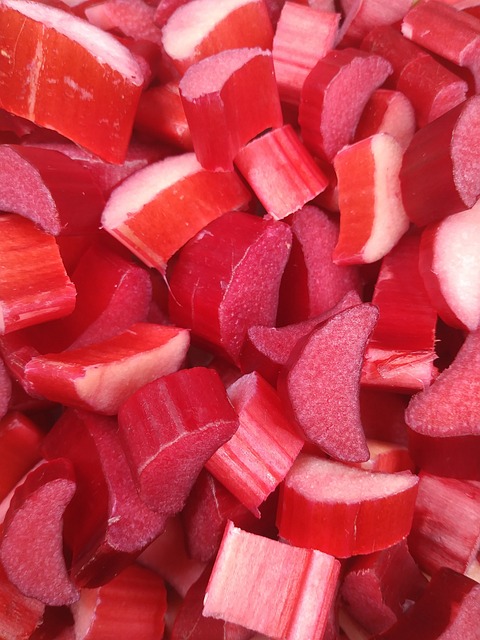
- Add one vanilla pod, split lengthwise to the mixture; or one tablespoon of vanilla extract. This is the stuff that dreams are made of!
- Other pairings include raspberries, lemon, lime or rhubarb.
- Herbs like rosemary, basil and even peppercorns.
- Lemon or orange zest – this adds a wonderful zestiness.
- Alcohol like Prosecco and Amaretto – add some at the end of the cooking process.
Note: This strawberry jam will not be very thick like other jams unless you add additional pectin to the mixture.
Suggestions on How to Use Your Strawberry Jam
- Smear generously on toast at any time of the day, or onto scones for a classic afternoon tea.
- Stir a spoonful through yoghurt or oatmeal.
- Add some to your smoothie.
- Thin some jam with a small amount of water, warm in the microwave and drizzle over vanilla ice cream or a slice of pound cake.
- Just the thing to sandwich your Victoria spongecake together.
- If you’re feeling a little more adventurous: Make a glaze for roasted meats – mix equal parts jam and balsamic vinegar, and add a little Dijon mustard and some thyme leaves.
- Use as a filling for tartlets, turnovers or crumble bars.
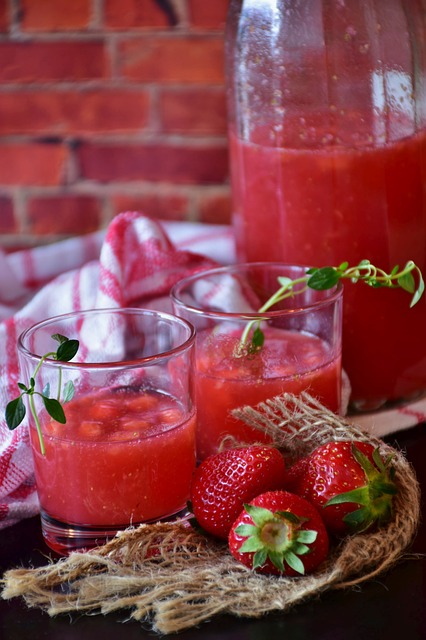
- Or even make a cocktail – mix a teaspoon of jam with vodka, lime juice and sparkling water for a drink that truly tastes like summer. Cheers!
- Share with friends and family.
- Enjoy a sneaky spoonful on its own – just because it’s delicious!
This homemade strawberry jam recipe is just the fun summer project you are looking for. It’s simple to follow and there are endless ways to enjoy the finished product. And who knows? You may just have enough left over to bring some strawberry summer to the grey winter months!
For more information see RESOURCES and RECIPES.
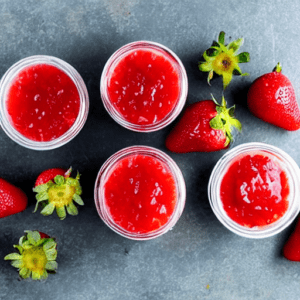
Easy Homemade Strawberry Jam Recipe – No Pectin
Equipment
- Chopping board and knife
- Bowl
- Saucepan
- Spoon for stirring
- Ladle
- Funnel
- Kitchen paper towel or clean damp cloth
Ingredients
- 800 g strawberries (2 punnets from the supermarket/market)
- 600 g white sugar
- ½ lemon
- dash water
Instructions
- Wash the strawberries and drain off excess water.
- Remove the green stems, or 'hull' the strawberries (do not throw these away! See the recipe for STRAWBERRY VINEGAR on how to use these leftovers for more enjoyment).
- Halve or quarter the strawberries. (Or put in a blender for a smooth mixture.)
- Add the strawberries to the bowl.
- Add half of the sugar, stir through, and allow this to macerate for 20min so that the fruit softens and releases its juices. Keep the bowl covered to keep away insects…
- Transfer the mixture to the saucepan, scraping out the bowl thoroughly. Add the remaining sugar. Cut the lemon in half and squeeze out its juice and add to the mixture. Stir this. Also, add the 2 squeezed whole lemon halves.
- Put a couple of small plates in the fridge or freezer to prepare for testing the set point of the jam.
- Stir the mixture over low heat and ensure that the sugar dissolves completely.
- Then turn up the heat until the mix starts to boil and bubble. Make sure it is not boiling so furiously that it boils over! Boil for 20 min, and then take off the heat to start testing for the set.
- Take out one of the cold plates and start to test the set point. Spoon a small amount of jam onto the cold plate, return it to the fridge briefly and then push the little jam pool with your finger – if the jam wrinkles on the surface, then the set point has been reached. If you have a candy thermometer, the setting point should be reached at 105°C.-See TIPS above for advice on what to do if not set.
- Once you have confirmed that the jam has reached the set point, take the pot off the heat and allow it to sit for 5-10minutes so that the strawberries distribute through the mix and do not just sink to the bottom.
- Remove the 2 lemon halves from the mixture.
- Ladle the jam into warm freshly sterilised jars, leaving a gap of around 4mm at the top. Seal tightly with a lid and leave to cool completely.
- Once cooled, check that the lids have dipped inwards towards the centre to confirm the seal. Label the jars with the name and date of making the preserve.
- The jam can be kept in a cool, dark place for up 12 months – if you can resist it that long!
Notes
TIPS to make the perfect strawberry jam:
The strawberries
-
- If you can, try to get the best quality strawberries that you can. You don’t need a bucket full!
-
- Try really hard to resist the temptation to make your strawberry jam with over-ripened fruit – slightly under ripe strawberries contain higher amounts of pectin which will aid the setting process, and too-ripe fruits can make the mixture mushy and risk quicker spoiling of the jam. If you do want to make some jam with any over-ripe strawberries click here for a different recipe that can accommodate this situation.
-
- You can use frozen strawberries instead of fresh ones. As the frozen fruits will have more water, this will extend the cooking time of the jam. Sometimes frozen strawberries can also be less sweet than fresh, and so a bit more sugar could be needed to achieve the same luscious outcome.
The sugar
-
- This recipe includes a large amount of white sugar – keep to the full recipe for your first try, knowing you can experiment with the amount and type of sweeteners to find the perfect and safe balance. The sugar in this recipe is not only for taste, it is also the main natural preservative stopping the jam from spoiling prematurely. This can enable you to store this jam for up to a year. With less sugar, you may need to add pectin.
The preparation
-
- Even if your strawberries come ‘pre-washed’, make sure that you wash them. Always wash the fruits ahead of cooking. Add a pinch of bicarbonate of soda, and a splash of vinegar to the washing water to rinse off pesticides and any insect hitchhikers. Then rinse with clean water, and allow to drain.
-
- Do not worry if a ‘scum’ starts to form on the surface of the jam while cooking – while you can skim it off the surface into a bowl, or just stir and allow it to disappear as the jam cooks.
-
- Because different varieties of strawberries and their level of ripeness can differ in their water content, together with possible variations in the amount of natural pectin in different lemons, this can affect the cooking time to reach the ‘set-point’ of the jam. In addition to having some flexibility with the time, you also need to be flexible with the amount of lemon juice that may be needed to realise a good outcome.
-
- This strawberry jam recipe does not use pectin (one less ingredient to find!)to accelerate the thickening and setting of the jam. You just need a bit longer cooking time to draw out the natural pectins in the strawberries and lemon juice combination to thicken this jam.
The cooking
-
- Depending on what you prefer, you can make this jam as smooth or as textured as you like. For a chunkier jam chop the strawberries roughly; and for a smooth jam, you can blend the fruits first or use a food processor.
-
- If the jam has not set after testing, continue to boil for a few more minutes and then test again.
-
- If the jam remains very runny you may also consider adding a bit more lemon juice – go slowly – add 2 tablespoons boil and retest, before considering a further 1-2 tablespoons if needed. It is important to let this cook through and then retest for set-point before adding too much lemon juice.
-
- If a jar lid has not dipped in the centre after cooling the sealed jam jar, it might still be fine to keep; but if in any doubt, put this jar in the fridge for use over the coming 2 weeks.
Flavour-enhancing options:
-
- Add one vanilla pod, split lengthwise to the mixture; or one tablespoon of vanilla extract. This is the stuff that dreams are made of!
- Other pairings include raspberries, lemon, lime or rhubarb.
- Herbs like rosemary, basil and even peppercorns.
- Lemon or orange zest – this adds a wonderful zestiness.
- Alcohol like Prosecco and Amaretto – add some at the end of the cooking process.
Suggestions on How to Use Your Strawberry Jam
-
- Smear generously on toast at any time of the day, or onto scones for a classic afternoon tea.
-
- Stir a spoonful through yoghurt or oatmeal.
-
- Add some to your smoothie.
-
- Thin some jam with a small amount of water, warm in the microwave and drizzle over vanilla ice cream or a slice of pound cake.
-
- Just the thing to sandwich your Victoria sponge cake together.
-
- If you’re feeling a little more adventurous: Make a glaze for roasted meats – mix equal parts jam and balsamic vinegar, and add a little Dijon mustard and some thyme leaves.
-
- Use as a filling for tartlets, turnovers or crumble bars.
-
- Or even make a cocktail – mix a teaspoon of jam with vodka, lime juice and sparkling water for a drink that truly tastes like summer. Cheers!
-
- Share with friends and family.
-
- Enjoy a sneaky spoonful on its own – just because it’s delicious!
Nutrition
Nutritional Disclaimer
All nutritional information is an estimate only, based on third-party calculations derived from an online nutritional calculator, Spoonacular API. The data provided is a courtesy and should not be considered a guarantee or fact. Each recipe and nutritional value will vary depending on the ingredients and brands you use, your measuring methods and portion sizes. For accurate results, we recommend that you calculate the nutritional information yourself, using a preferred nutritional calculator or advice from a nutritionist, based on your ingredients and individual processes.